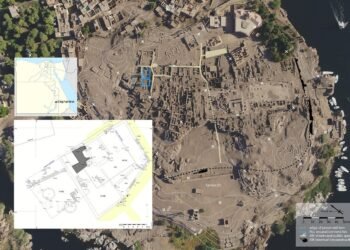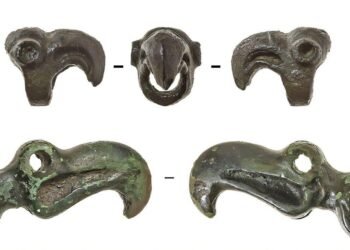Off the coast of Sicily, near the ancient city of Gela, recovery operations are underway for the 5th-century BCE Greek shipwreck, “Gela II.” The wreck, discovered in 1980 by divers near Bulala, is a vital historical find that has yielded numerous treasures, most notably orichalcum, a metal alloy with connections to the legendary city of Atlantis.

The Gela II wreck, which lies about 1,000 feet underwater, is remarkably well-preserved. Underwater archaeologists first investigated the site in the 1990s, but it was in 2015 and 2017 that significant discoveries were made. Over these two expeditions, 86 ingots of orichalcum were recovered from the seabed.
Orichalcum, derived from the Greek word “oreikhalkos” meaning “mountain copper,” has long been a subject of fascination. Classical sources like Plato’s Critias describe orichalcum as a highly valuable metal, second only to gold. In the mythical city of Atlantis, orichalcum was said to cover the walls of the Temple of Poseidon and Cleito, giving them a red gleam. While there has been much debate over the metal’s composition, modern analysis of the ingots from Gela II reveals that they are an alloy composed of 75-80% copper and 14-20% zinc, with traces of nickel, lead, and iron.
According to Sebastiano Tusa, former superintendent of Sicily’s Sea Office, the ingots recovered from the shipwreck likely originated from Greece or Asia Minor. “The discovery of orichalcum ingots is significant because nothing similar has ever been found,” Tusa noted. “We knew of orichalcum from ancient texts and a few ornamental objects, but these ingots are unprecedented.”
Gela II, measuring approximately 50 feet long and 16 feet wide, was a merchant vessel that would have transported goods across the Mediterranean. In addition to the orichalcum ingots, archaeologists have uncovered Corinthian helmets, amphorae, pottery, and personal belongings of the crew.
The current recovery operation, led by the Superintendence of the Sea of the Sicilian Region, in collaboration with specialized companies Atlantis and Cosiam, is expected to take around 270 days to complete. The project involves dismantling the ship’s timber remains from the ocean floor for restoration. These timbers will be transferred to the Superintendent for Cultural Property of Caltanissetta before being displayed at the Archaeological Park of Gela.
This recovery follows the successful excavation of another shipwreck, Gela I, in the same area. The artifacts from Gela I are now housed in a museum in Bosco Littorio, and the hope is that Gela II will attract similar cultural and tourist interest. Francesco Paolo Scarpinato, Sicilian regional councilor for Cultural Heritage, said: “The sea of Gela has returned finds crucial for the reconstruction of its history.”






















